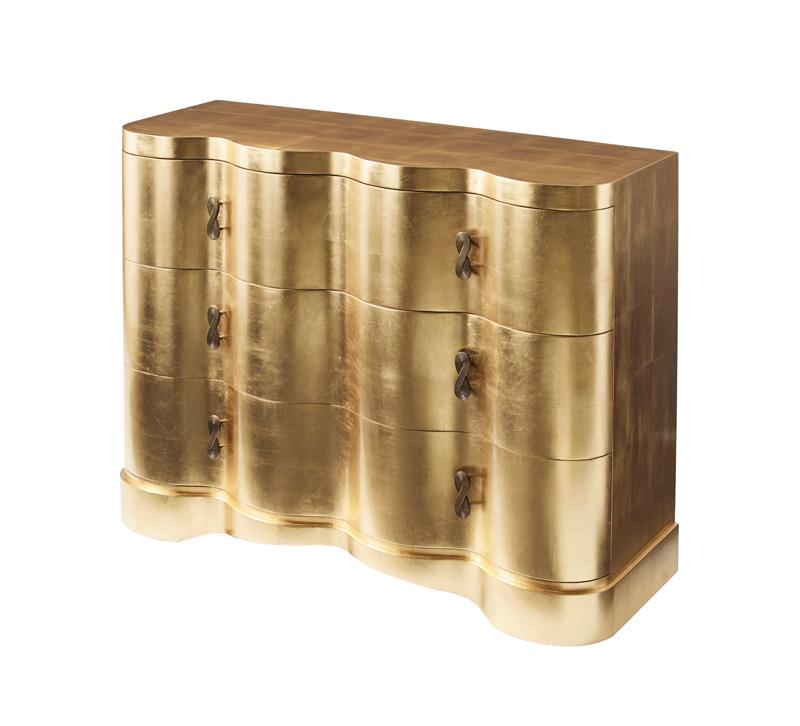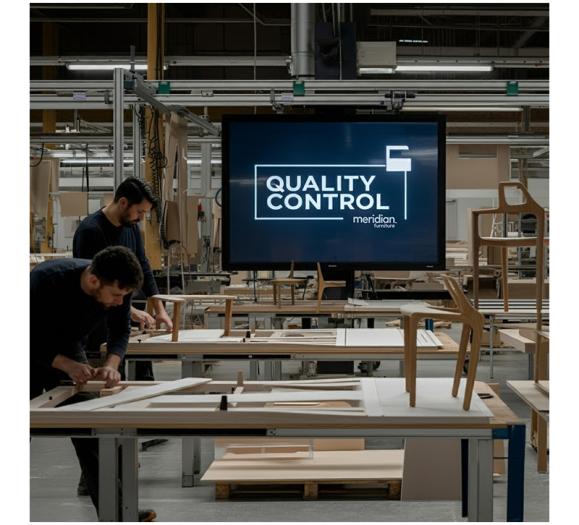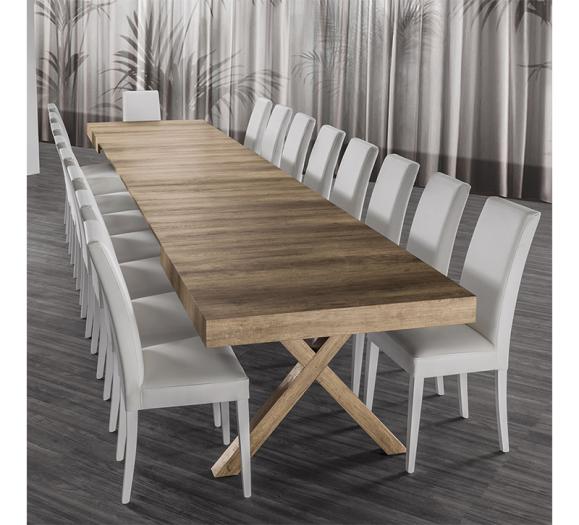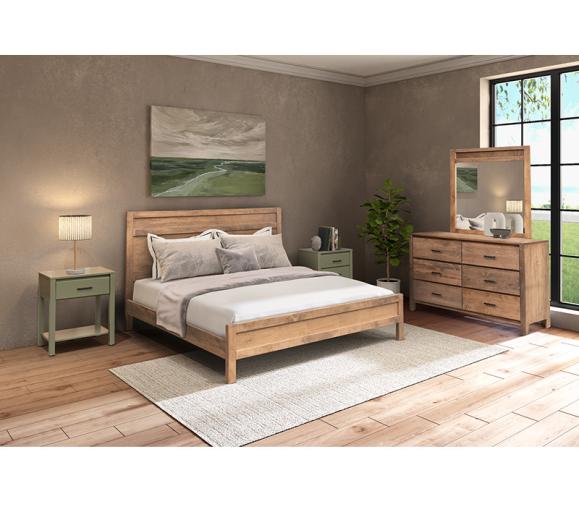Recently, Alex Shuford III, President of the Rock House Farm Family of Brands, which includes Century Furniture and Highland House, read a story in the Wall Street Journal on the Morgan Motor Company, a British automaker that has been crafting cars by hand for more than 100 years. As he was doing so, he thought about the furniture industry — particularly the upper end.
He felt a sense of comfort knowing that in a world of automation —where consumers expect complete uniformity and, he thinks, don’t understand the art of hand-making product like they used to — that that could still be done, a car made by hand. Today, Morgan produces and sells the same iconic model with the same look as it had in the 1930s, and each finished product is slightly different because of the woodworking and metalworking still done by craftsmen themselves.
A look at the high-end and luxury casegoods segment in 2018 reveals the eclecticism and customization that now defines it, where it’s important to Mrs. Smith to have a case piece designed precisely to her specifications. And, similarly to the Morgan Motor Company, that handmade aspect is one of the appealing characteristics.
“The U.S. casegoods factories that are left are now acting more like cabinet shops than they are big casegoods factories,” Shuford says. “I think this puts the power in the interior designer’s hands. Ten to 15 years ago, casegoods were very suited. Nowadays, it’s probably not even worth a conversation about that because people don’t buy that way.”
Today, each individual item needs to have enough gusto on its own to stand out and tell a story. And so do the manufacturers creating these products, as well as the retailers that sell them.
I Want It That Way
You can’t have a discussion about high-end casegoods nowadays without diving deep into customization, which has become much more important in the last decade. Driven by the influence of the interior designer, the ability to customize product affords opportunities, but also challenges, for manufacturers. High-end consumers want something unique, something that their next-door neighbor has never seen before and something they can be proud of when entertaining.
“The challenge we have at Theodore Alexander, and the same they have at companies like ours, is how much of your product can you indeed customize,” says Vice President of Theodore Alexander’s Designer Division Steven Avitable, who has also held management and consulting positions at a handful of other manufacturers and retailers in the furniture industry over his 30-plus year career. “We all have some version of a customization program, but I don’t think any of us are doing it great yet. At Theodore Alexander, we’re going to focus on this strongly moving forward.”
A big barrier? The cost. Another? Providing a full range of capabilities, while also satisfying quick turnaround times that are expected. “Luxury is still very, very customizable” Avitable says. “And then you get the high-end like Theodore Alexander and people in our niche that do some customization, but there’s still a void between where we top out and where the luxury world starts. That will be a challenge. I’m always disappointed when we can’t satisfy designers’ needs. It’s like we’re so close — the finish is right, the style is right, but there’s something we can’t do.”
Changing Consumer Preferences
Being able to provide consumers with exactly what they want is a large part of the equation — and the dilemma.
“What has happened since the Great Recession, and probably even before that as the real impact of 9/11 hit — which really changed how people shop — is that consumers raced toward comfort, enclosure and the internet,” says Lance Hanish, a veteran advertising talent who has done a considerable amount of work in home furnishings for both retailers and manufacturers. “The big guys online started making in-roads and the high-end store guys said, ‘Right, but you have to touch and feel it.’”
And now, the industry is caught in an age gap where the customs that they had formed to sell their products became old-fashioned and out-of-date, not only to younger buyers but to established buyers as well.
“Consumers have learned that almost anything can be made to look good on a picture on the internet,” Avitable says. “So we’re finding that the whole bricks-and-clicks concept is critical. They don’t have to see everything you make, but they need to experience and touch enough to validate the quality.”
“I think even the very affluent consumers are more hesitant to say, ‘I’ll spend whatever it takes to get high quality because of the transparency today,’” he continues. “There is a lot of good product at more attractive pricing and of acceptable quality.”
And then there’s the reality of mobility. Most people, especially the younger ones, are not going to be living in the same home today as they are 10 years from now because of careers, changing incomes, changing housing market, etc. The thought of having to transport all of their items from home to home weighs on their buying decisions.
“I do think today’s consumers want to live well and have nice things, but there’s a value proposition — the combination of the price of the piece and the quality of the piece equals the value, and they are value-driven,” Avitable says.
Changing lifestyles also play into the fact that, however heartbreaking, furniture is not as multi-generational as it used to be. Many of the case pieces that were in demand 25 years ago are still in great shape because they were very well made, but they’re sitting on resale shop floors for the taking at 1/10 of the price they would’ve gone for back when.
“We get those retailers that say, ‘Why don’t you do a real nice traditional group, you haven’t done one in a while,’” Shuford says. ”My response to them is to go to their local consignment store and see what they can spend on a wonderful old Henredon dining table. They can buy it cheaper there than I can buy the materials to make it.”
And grappling with that is a challenge, he says, for big players in high-end casegoods because they were all, at their core, traditional furniture companies.
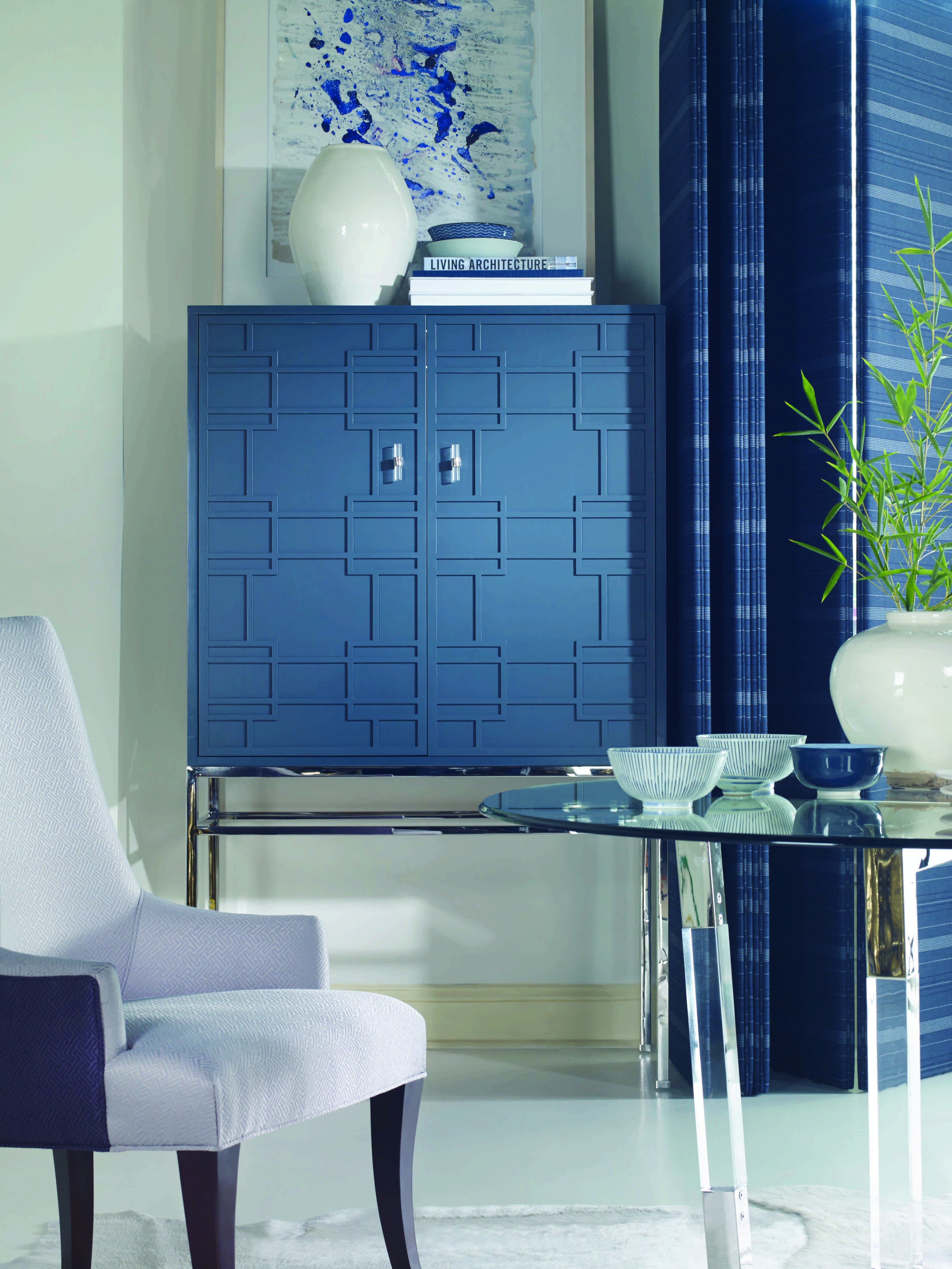
But not anymore. Shuford says that although many people still think of Century as traditional, well over 50 percent of the manufacturer’s sales today is what they would call transitional or contemporary product.
“When we look at where this transitional and contemporary is going, a lot of times it’s condo and apartment living for upper-end and older customers in the city,” Shuford explains. “I think you see a lot of European contemporary brands having success in the United States now because they’re really appealing in part to that group.”
We’ve reported on the fact that Boomers don’t necessarily feel old, and the concept of aging-in-place doesn’t always resonate as this generation is bucking a preconceived notion. They’re empty nesters, downsizing and moving back into urban areas and either can’t accommodate their old, heavy furniture anymore or want to upgrade to something sleeker and smaller. Contemporary speaks to them, too.
“We’ve had several designers recently who are helping long-term clients who are now downsizing, and they’ve said that of the pieces their clients do need to buy because what they had was too big,” Avitable explains, “many are not going to the level they did before. They’re taking those really good pieces with them that fit and they’re willing to mix in something that’s not as expensive. Whereas in the past they would’ve all just continued at a price level, that doesn’t seem to happen as much.”
Just as the second-home market was great for the upper-end of the furniture industry, Shuford says this downsizing trend is just as impactful.
Another shift that has come along with the different ways people live today? Saying goodbye to the armoire and china cabinet. Now that TVs are 4 inches deep, a huge case to hold an old CRT screen is no longer needed.
“Those used to be high-dollar pieces of furniture,” Shuford said. “They represented a dollars-per-unit for a factory that were unrivaled. So we’ve all been casting around asking what form factor should go into the room instead.”
Enter the bar cabinet. Consumers could showcase their top-shelf liquor and barware, and manufacturers could show off the woodworking capabilities no longer needed for the armoires and china cabinets.
“I think at the upper end, if you went back in time and interviewed people 20 years ago at a casegoods factory, asking them how many true boxes they produce” Shuford asks, “they’d say, ‘Oh, we make 3-to-1 cases to tables.’ If you go into the modern factory today, it would be way more tables than cases. We make an awful lot of little cocktail tables, martini tables and hallway tables because the old cases, which used to be a staple, especially in the bedroom, have disappeared.”
A World of Possibility
Given all of these shifts, where do the opportunities lie for retailers of high-end casegoods? According to Hanish, jumping into e-commerce full bore without hesitation is key.
“Quality is becoming more important to consumers than price,” he adds. “The consumer has been trained by department stores and mass merchants to look for deals, and a lot of retailers responded to that with deep discounts. But once you’re in that trap, it’s hard to escape. People are still caught in this trap … they know how to sell furniture, but they don’t know how to tell their story, and that’s the issue.”
And on the flip side, high-end casegood manufacturers also need to do a better job of connecting with their retailers.
“You’ve got to help these people make a differentiation between your brand and the others,” Hanish says. Putting themselves in the retailer’s shoes gives high-end casegoods manufacturers the edge.
“We talk a lot here about if you were a modern retailer who was just getting started and going to go out and open a store, how big would it be?,” asks Shuford. “Would it be 50,000 square feet? No, probably 5,000 to 10,000 square feet. And then how would you assemble your vendor structure and the products that you show in that 5,000 to 10,000 square feet to ensure that they perform at the level necessary to be successful? And then how do we become one of those vendors? What can we do with our line that not only makes the consumer happy, but also satisfies business requirements of that retailer?”
That’s where the options side of upper-end furniture comes in. If there’s a chest on the floor that’s only sold one way, you’re counting on that to really perform. If, instead, there’s a chest on the floor that a customer can change the finish, hardware and size of, that changes the game and opens the door for more sales.
Key to Success
Remember when Dr. Pepper introduced its own line of barbeque sauce, flavored like the popular soft drink, in 2014? Or when Cosmopolitan magazine tried its hand at a line of yogurt in the late ‘90s? Neither took off and are now shining examples of bad brand diversification.
The upper end of the furniture industry has seen its fair share of questionable extensions too, with increased manufacturing capabilities, the internet and the temptation to try and be everything to everyone — especially as the way people are interacting with furniture has changed. But today, the manufacturers who know their strengths and maintain a unique spin on product are the ones who will succeed moving forward.
“Back when there were lots of strong, vibrant casegoods companies who were competing with each other, the product was different,” says Avitable. “Now, with big umbrella companies, a lot of things look and feel the same, and I think that’s a huge challenge in trade showrooms. When all the major manufacturers had a point of view, there wasn’t as much product being introduced. Now, there are so many people trying to do everything.”
Between the quickened pace of design creation; the expense of product development; dwindling retail square footage to showcase product; and the costs at end of life, the number of products being introduced at each market is not only overwhelming to buyers.
“I think it’s a burden on everybody,” Shuford says. “I liken it to the Cold War — we look around the industry at our competitors and we think to ourselves gosh, we’d like to stop building missiles. We’ll do it as soon as they stop building missiles, but we don’t trust them if they tell us they’ll stop so we’re going to keep doing it. And I think our competitors feel the same way. Even if the ideas are good, there’s just too much for the marketplace to absorb, and no one wants to take the foot off the gas pedal for fear of losing an opportunity or their place in line.”
Looking Ahead
Hanish said he was talking to a high-end casegoods manufacturer recently and asked him what he thought the advantages of designing and offering quality in today’s environment were. The response he received stopped him in his tracks.
“This individual said, ‘Zero advantages. Frankly, we’re trying to get out of it.’ I think that’s what recent happenings have really done,” says Hanish, “is sent a volt that’s reverberating through this part of the industry. High-end is not what it used to be.”
So what possesses those still in business to stay in business?
“I think it’s about a love of product as you move up the luxury side of the marketplace, and I think you’ll find that as a common thread of the people who run those companies,” Shuford says.
And, he points out, that the Century team has a good laugh when people assume the manufacturer’s margins must be great.
“If you saw our margins, you’d be shocked,” he says with a laugh. “You say, ‘Why do you do this?’ You wake up and say, ‘Well, we do it because that’s what my dad did and he did it because that’s what his dad did. Fortunately, there’s just enough margin where we can keep doing it for a little while longer.”



